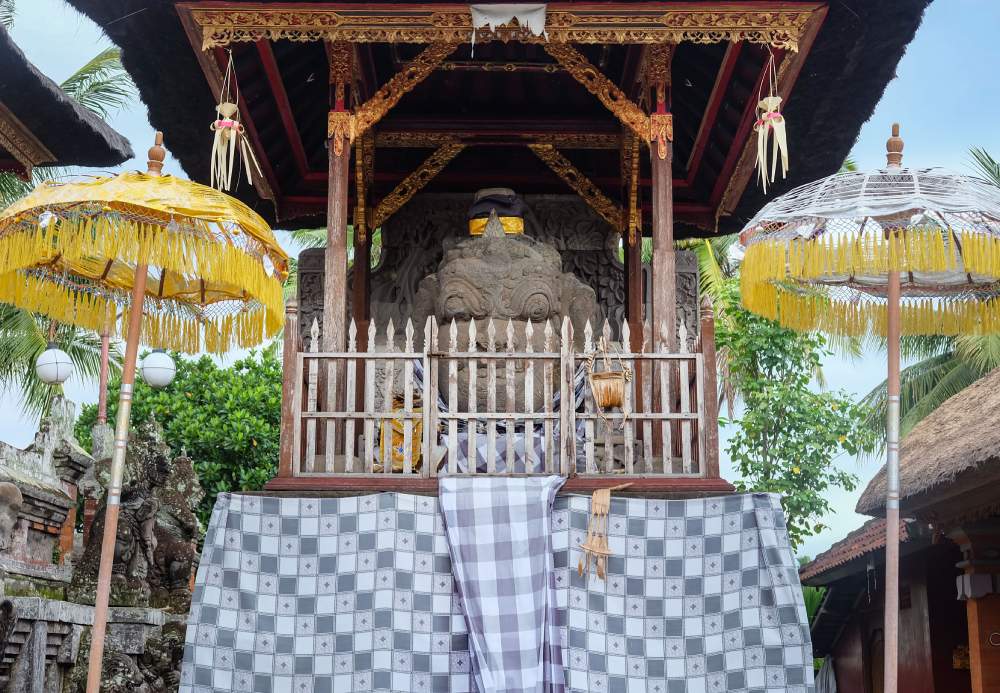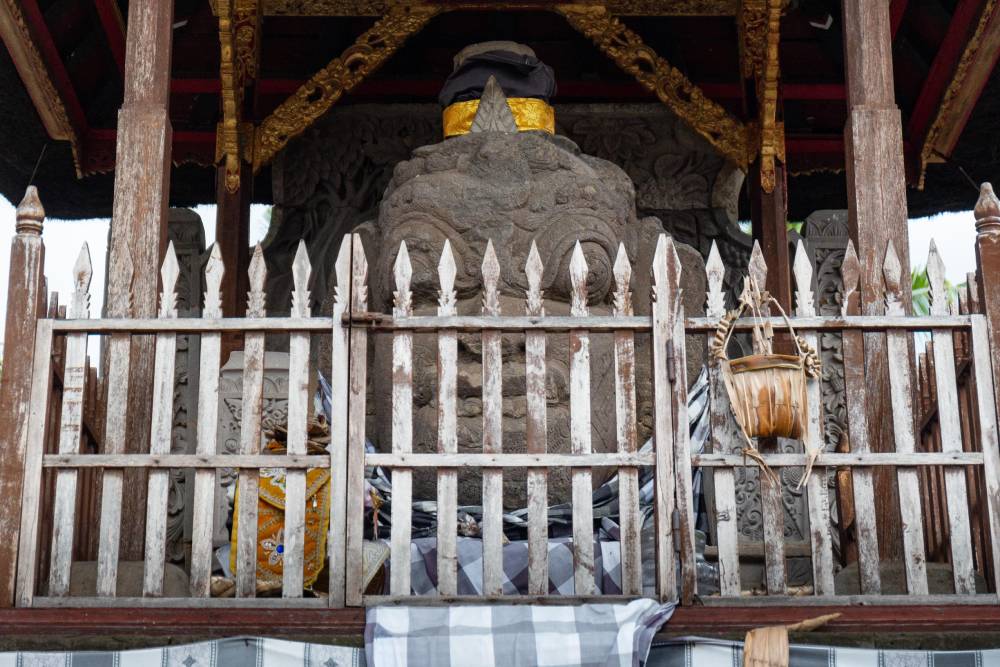
Bali is a land of lush landscapes and vibrant cultures, rich in myths and legends. Amongst these, the tale of Kebo Iwa stands out for its poignant narrative and profound themes of loyalty, betrayal, and the seismic power shifts that altered Bali’s past.
Kebo Iwa, meaning “Uncle Buffalo,” was a figure of immense strength and towering stature, revered as both a giant and a formidable warrior. His homeland was Bali, then a mosaic of sovereign kingdoms. His extraordinary size and might matched his devotion to his homeland and its people, making him a central figure in Balinese legend. Kebo Iwa was not just a physical colossus but also the protector of Bali. Despite his voracious hunger, which strained his community’s resources, his unwavering loyalty and unparalleled strength made him invaluable. The Balinese revered him for his physical prowess and dedication to safeguarding their land.
The tale takes a sinister turn with the arrival of the Majapahit Empire, the powerful Hindu-Javanese kingdom with ambitions to expand its influence over Bali. Despite their formidable defence, the Majapahit faced a relentless foe in the Balinese forces, who recognised that defeating Kebo Iwa was crucial to their conquest. They devised a plan to entrap the giant warrior under the guise of friendship. The Majapahit emissaries proposed a seemingly altruistic gesture: they offered to assist in building a grand water reservoir for Bali, suffering from severe drought. Kebo Iwa, driven by his sense of duty and desire to help his people, agreed to undertake this monumental task. He began excavating a massive pit intended to serve as a reservoir to relieve his people’s suffering.

As Kebo Iwa dug deeper into the earth, the Majapahit forces, pretending to help, filled the pit with rocks and debris, trapping him inside. Too late, Kebo Iwa realised the betrayal. Despite his mighty strength, he could not escape and met his tragic end, buried alive by those he had trusted. This treacherous act marked the fall of Bali to the Majapahit, symbolising the loss of a mighty warrior and the end of an era of independence, heralding foreign dominance over the island.
The flood, caused by the well overflowing, led to significant damage for the villagers, destroying their belongings, farmland, and homes. They were forced to evacuate to higher ground for safety. Eventually, some flooded villages merged to form Lake Batur, while the soil from Kebo Iwa’s excavation became the well-known Mount Batur we see today.
Kebo Iwa’s story transcends a mere tale of physical prowess and tragic demise. It is a powerful allegory for the shifting power dynamics in Southeast Asia during the 14th century. His death epitomises the end of Bali’s resistance against Majapahit expansion, leading to a significant cultural and political transformation. His legend is a poignant reminder of betrayal and the catastrophic impact of internal and external conflicts on a community’s sovereignty and cultural heritage.
For the Balinese, Kebo Iwa remains a symbol of resilience and loyalty, embodying the island’s enduring spirit in adversity. His story resonates deeply within Balinese culture, reminding the people of their historical struggles and the ever-present need to cherish and protect their heritage. As Bali thrives as a hub of cultural richness and natural beauty, the legend of Kebo Iwa is a timeless reminder of the sacrifices and resilience required to preserve the island’s unique identity amidst a rapidly changing world.









